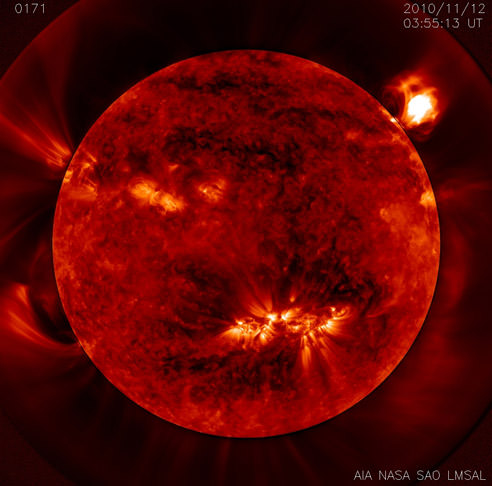


Parker will keep collecting more data over the coming years. This point, named the Alfvén critical surface, marks the end of the solar atmosphere and the beginning of the solar wind, said Nasa in the post. The cause of the solar wind is the pressure and the heat pushing that material away from the Sun, to a point where the hold of gravity and other forces weakens. The temperature should be even lower farther away from the Sun, but the temperature of the corona is measured at more than a million degrees. Our Sun is surrounded by a jacket of gases called an atmosphere. However, the corona can be viewed during a total solar eclipse. That makes it difficult to see without using special instruments. The corona is usually hidden by the bright light of the Sun's surface. Even if the temperature in the core of the Sun does reach 15 million degrees, it drops to a mere 5000 degrees at the surface. The Sun’s corona is the outermost part of the Sun’s atmosphere. "Parker Solar Probe “touching the Sun” is a monumental moment for solar science and a truly remarkable feat," said Thomas Zurbuchen, the associate administrator for the Science Mission Directorate at NASA Headquarters in Washington "Not only does this milestone provide us with deeper insights into our Sun's evolution and it's impacts on our solar system, but everything we learn about our own star also teaches us more about stars in the rest of the universe.” As per Nasa, the Sun does not have a solid surface like the Earth, and has instead an atmosphere constituted of solar material bound to the star due to the pull of gravity and magnetic forces. The problem is, no one can really explain how this corona exists. When its mission is done, we may finally understand more about the enigmatic star that powers our world.NASA's Parker Solar Probe Touches The Sun For The First Time Nasa hailed the feat in an official post. So, if you weren't already excited by this awesome little probe overhauling our understanding of the heart of our Solar System, hopefully you are now.Īrguably the best thing is the fact the little spacecraft still has another 15 perihelions ahead of it, and we have four more years of data to collect and analyze. But don't forget the Parker Solar Probe was moving at speeds of up to a phenomenal 147 kilometers per second or 529,200 kilometers per hour (that's around 91 miles per second or 328,830 miles per hour) – you can watch the speed being clocked on the bottom left of the footage. If that sounds like a whole lot of a view to take in over just five days, you're not wrong. This has been helpfully annotated by Tremblay below: While NASA hasn't confirmed which planets are which, detailed internet sleuthing by astrophysicist Grant Tremblay from the Harvard & Smithsonian Center for Astrophysics has come up with some answers.Īccording to Tremblay, with the help of computational scientist Karl Battams and Andrew Phillips, in order of appearance, we first see Mars, Mercury, Venus, the Milky Way, Saturn, and finally, a little dance between Earth and Jupiter. Take another look and you may notice there are planets visible in the background – including Earth!Ĭonfirmed from the excellent and /2vfAIgoQqt- Grant Tremblay December 15, 2021 But that's not all there is to gape at in the Parker time lapse.


 0 kommentar(er)
0 kommentar(er)
